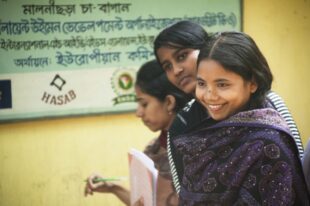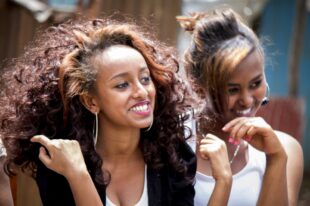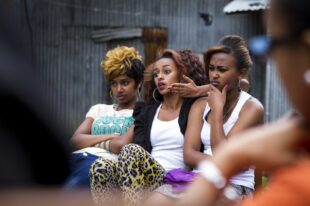At the International HIV/AIDS Alliance’s recent 20th anniversary convention, Jackline Kemigisha, the founder of the Girls Awake Foundation in Uganda, shared her own compelling personal story of the impact of gender-based violence. She was conceived through rape, and then at 15 was raped herself, contracting HIV as a result. “After this I not only needed to learn to live with the health issues associated with HIV but also the social stigma it carried with it. One of the hardest obstacles for me was being ostracised by my family, namely my father who then refused to help fund the university education I had been hoping for.”
Jackline was forced to leave home at the age of 19 with nowhere to go and no job. It was because of her own personal conviction that she has got to where she is today, a global advocate for the rights of young people living with HIV, establishing her own organisation to help other girls and women in similar situations.

Globally, 1 in 3 women will experience physical and/or sexual violence at some point in their lifetimes, most commonly by an intimate partner. Among most at risk groups such as women selling sex, women who use drugs and transgender women, the figure is even higher. South Africa has one of the highest rates of sexual violence in the world. It’s a similar story in Asia. A recent UN multi-country study on men and violence in Asia and the Pacific revealed that almost 1 in 4 men had “forced a woman… to have sex”. As Phumzile Mlambo-Ngucka, the Executive Director of UN Women concludes: “It means that in the world, the beating up of women is a pastime.” Every girl and woman, boy and man has the right to live free from violence and abuse.
Research has shown that there is a link between HIV infection and intimate partner violence (IPV). We need to integrate interventions to counter IPV within sexual reproductive health programmes, protect and promote human rights, challenge harmful gender norms and address gender-based violence. Only then can we adequately address the fact that HIV remains the leading cause of death of women of reproductive age around the world.
Violence against women is a manifestation of power and control, a way to maintain gender inequalities, impacting upon the health, safety and freedom of women globally. If girls and women are to fulfil their potential, changing cultural norms towards a zero tolerance of violence against women must become a priority. We need to support survivors and hold perpetrators to account. It will require coherent policies and programmes that emphasise gender equality and the transformation of social norms and can only be achieved through the engagement of men and boys to help tackle the underlying drivers of violence against girls and women.

One of the most shocking acts of gender based violence is female genital mutilation/cutting (FGM/C), from which over 125 million girls and women worldwide have suffered. At the Family Planning Conference in Addis Ababa last year, I met Mae Azango, a Liberian journalist whose reporting on the practice led to death threats and her fleeing the country. She returned to Liberia 3 weeks later after pressure from global advocacy groups led government ministers and traditional leaders to come forward for the first time to denounce FGM/C and commit to ending the practice. In a country where 2 in 3 girls are cut, this is a huge step forward.The practice of FGM/C often results in serious infections, sometimes girls even bleed to death. Its purpose? Mae explained: “By depriving women of the ability to feel sexual pleasure, you guarantee that they will remain faithful to their husbands”. As the mother of 2 young daughters myself, it’s shocking to me that this is the reality today for many young girls in West, East and North East Africa, as well as parts of Asia and the Middle East. Migration to Europe means that an estimated 24,000 girls are also at risk of FGM/C here in the UK.

With all the rhetoric around the need to focus on “women and girls” and “gender transformative” approaches to address cultural and social norms that increase women and girls’ vulnerabilities, it is a sad fact that many young women and girls continue to face these same challenges and we urgently need to step up to the challenge.Ending the global pandemic of violence against women must be a priority as the UN works on the post-2015 development agenda, alongside a clear target to significantly reduce new HIV infections and HIV-related deaths among women and girls. Drawing on her experience, Jackline emphasised the importance of ensuring that women, girls, young people and sexual minorities are all included and fully involved. “We must be the change we want to see,” she explained.
---------------------------------------------------------------------------------------------
Please note, this is a guest blog. Views expressed here do not necessarily represent the views of DFID or have the support of the British government.
For more details of the UK's work on empowering the lives of girls and women in the world's poorest countries read our policy page.
Keep in touch - sign up for email updates from this blog.

1 comment
Comment by One in 3: far more than a statistic | Post2015.org - what comes after the MDGs? posted on
[...] Written by Helen Parry, Senior Advisor on Sexual and Reproductive Health with the International HIV/AIDS Alliance on the DFID blog. [...]